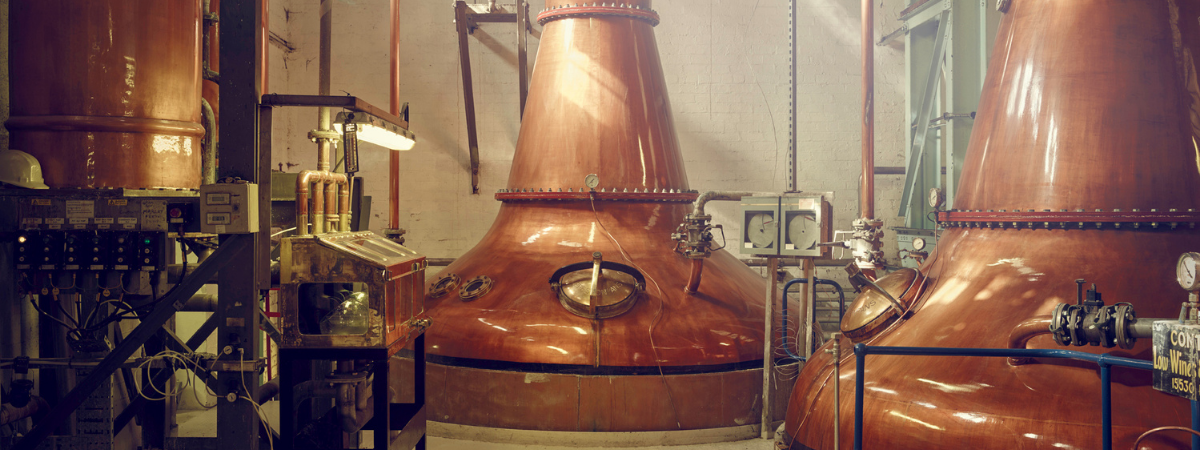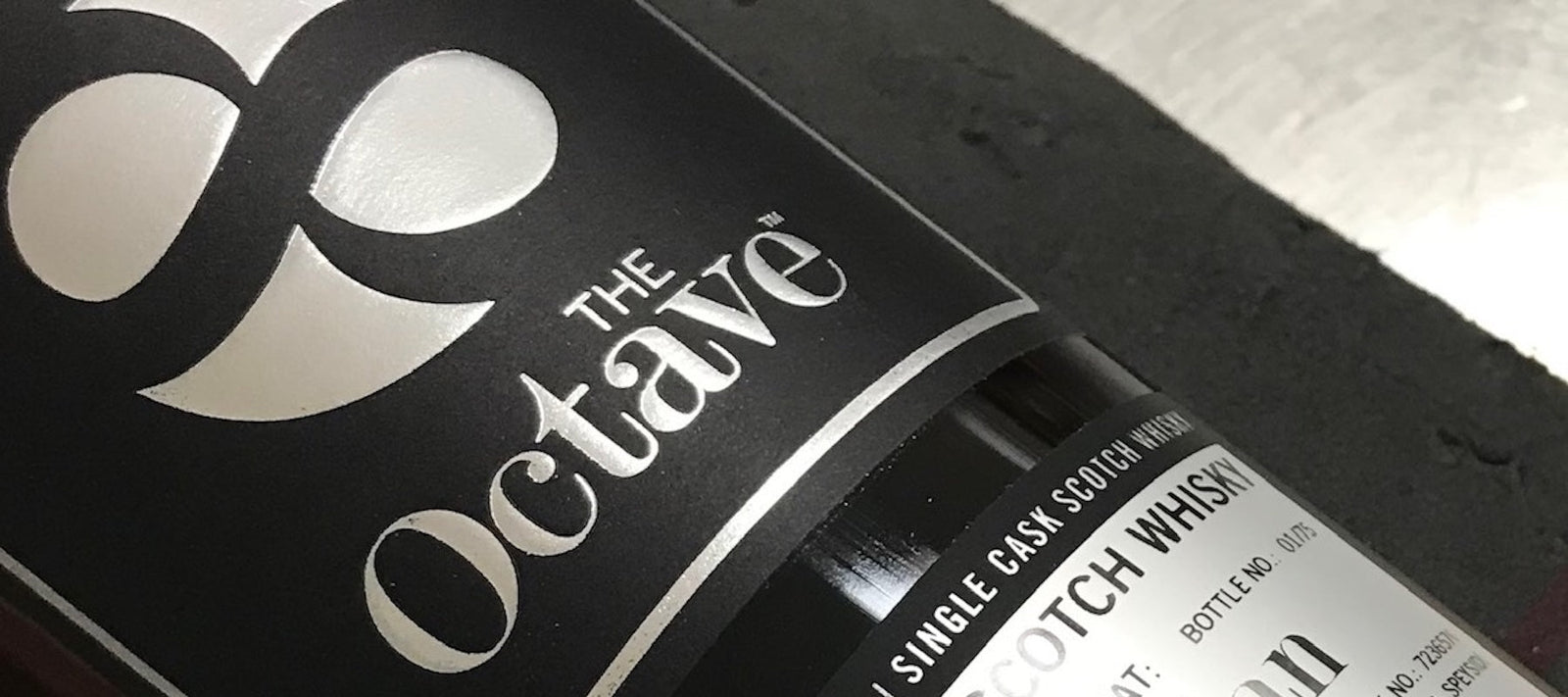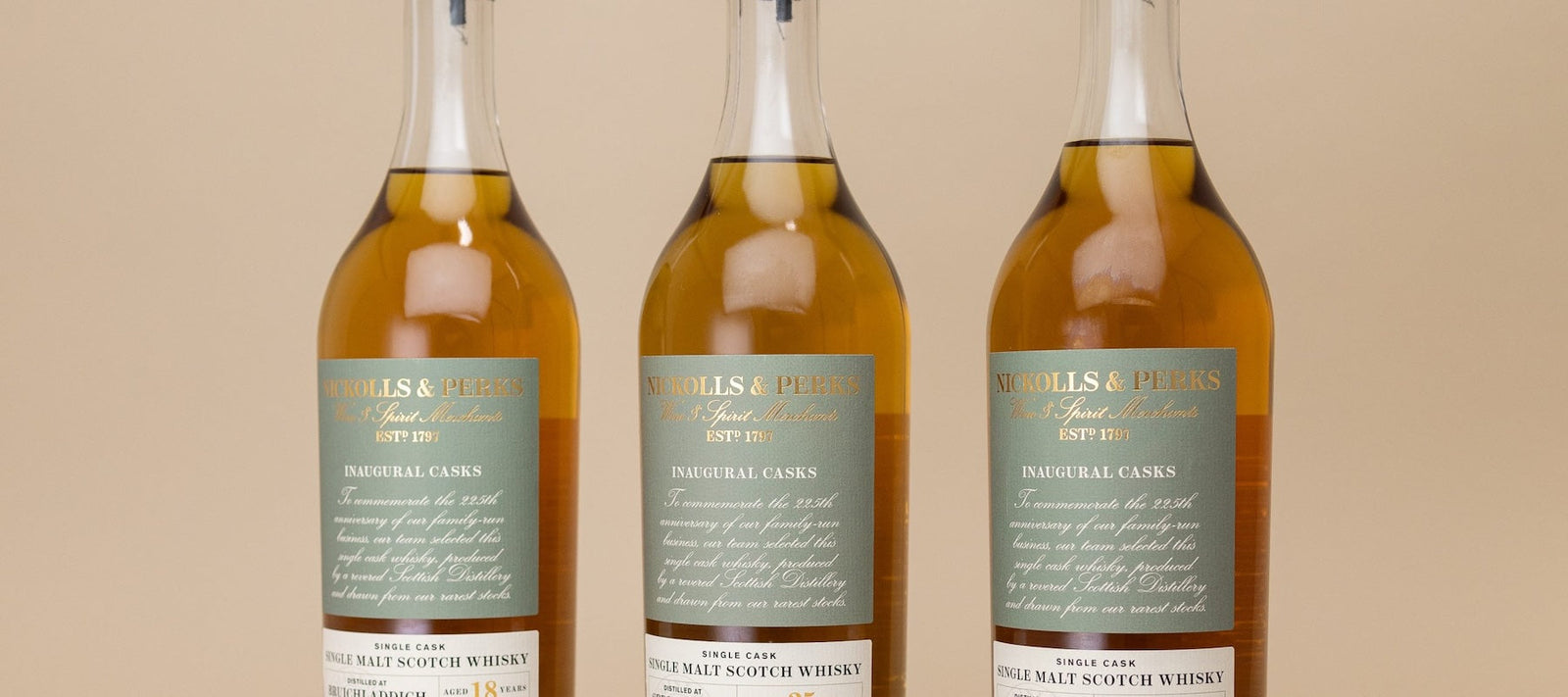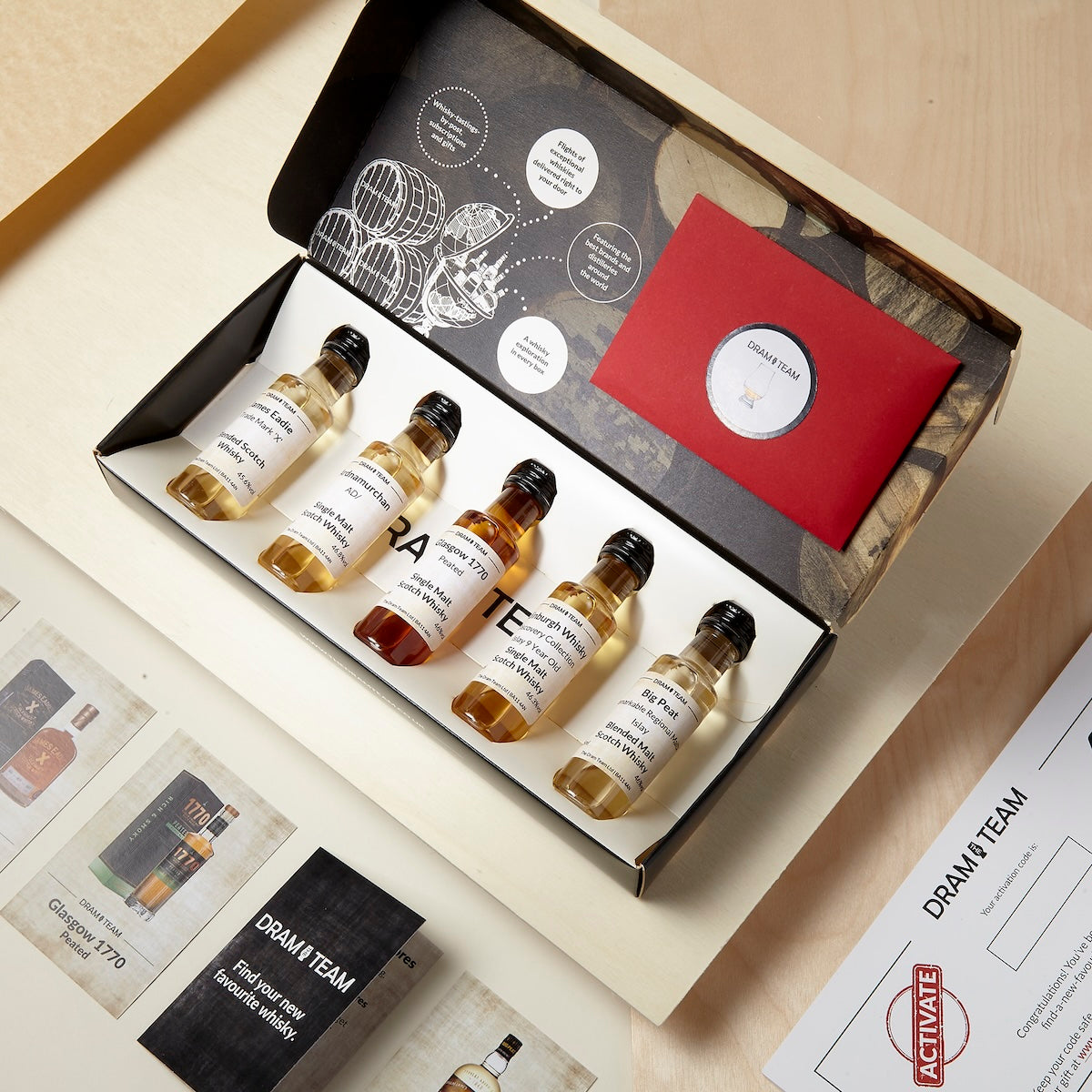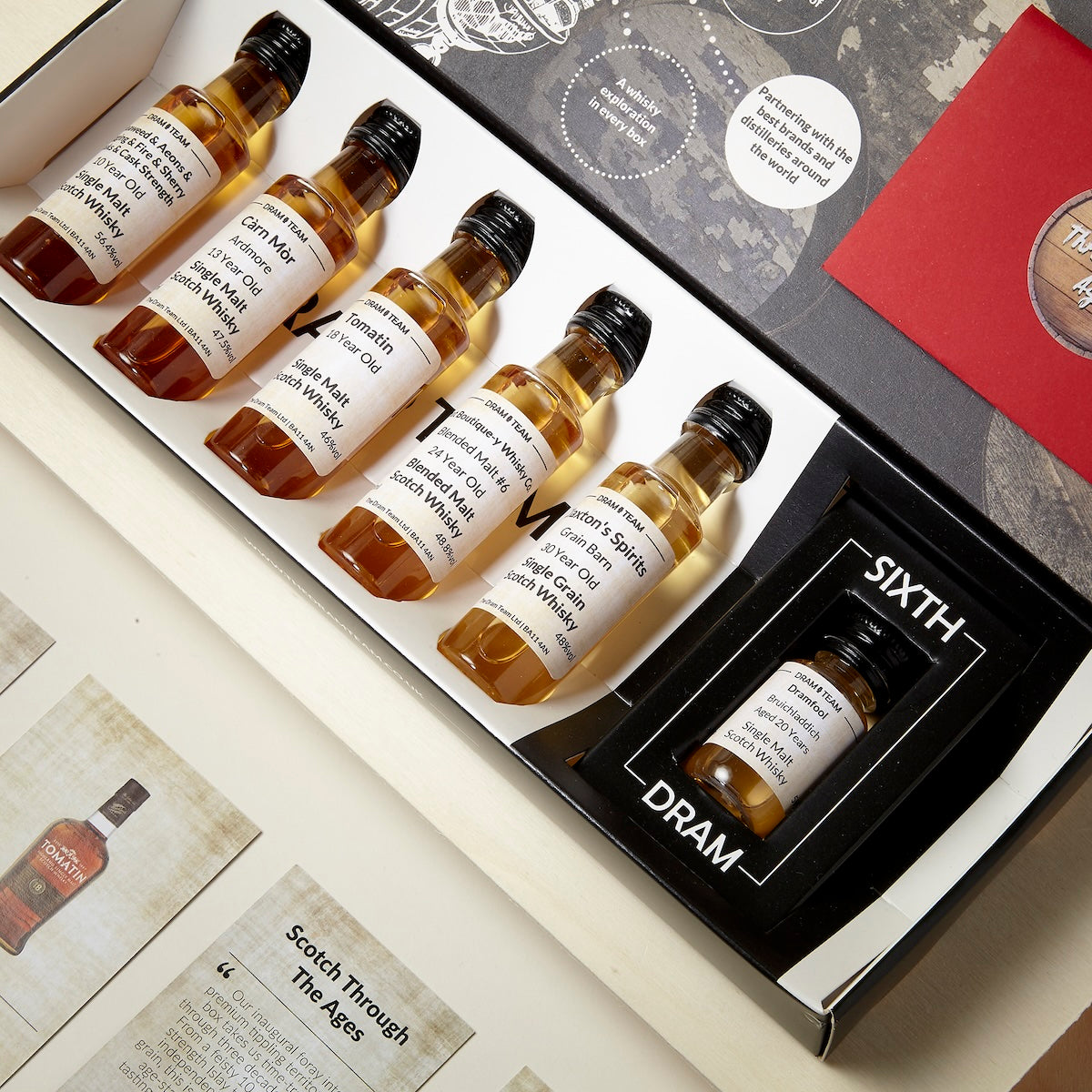If you’ve ever been to a Scotch whisky distillery, you’ll know how proud they are of their stills. Distillers will tell you that each still has a personality, and that has a huge impact on the style of spirit it creates. In fact, some distilleries go so far as naming their stills, like Janis and Proud Mary at the Cotswolds Distillery. This month’s tasting box was a showcase of the Loch Lomond Distillery, which has one of the most unique still set-ups around. It inspired us to explore how and why a still has a huge influence on the resulting whisky.
Pot or Column still?
First things first, stills come in many shapes and sizes. The biggest influence on whisky is the type of still you use.
There are two main types of stills that are used in whisky production, traditional pot stills and the more "industrial" column still. Column stills are typically used to create grain whiskies, whereas pot stills dominate when it comes to single malts. Pot stills are most similar to the original “alembic” stills that would have been used when distilling was first invented, and their design has changed very little since that time. Pot stills can only be used for batch distilling, and must be cleaned thoroughly between each use. They also aren't able to distill to higher ABVs and therefore create heavier, more flavourful spirits.
A new type of still
It wasn’t until the early/mid 1800s that engineers and scientists were racing to invent a still that could be used continuously, without needing as much cleaning and maintenance. Irishman Aeneas Coffey was the most successful in this, patenting his continuous still in 1830. To this day, we still refer to his style of continuous still as a Coffey still. Modern column stills are very tall, with a series of horizontal perforated plates inside the neck. This allows for much higher levels of reflux (we’ll get to that in the next section).
 A diagram of the Coffey still, showing how the spirit travels through
A diagram of the Coffey still, showing how the spirit travels through
This new type of still enabled distillers to distill much more efficiently, and to a much higher ABV than before. Because of this, and the use of copper to remove other heavy compounds, the resulting whisky was often much lighter and purer in flavour than the harsh, pot still whiskies that were around before. Interestingly, Ireland widely rejected Coffey’s invention, while Scotland embraced it - which is one of the reasons Scotch saw such a boom in the late 1800s, as they could make whisky much more cheaply!
Most Scotch single malt whisky distilleries have at least two pot stills, as the spirit needs to be distilled at least twice. Some have a lot more: Macallan’s newly built facility houses a whopping 36 stills! Not many distilleries at all house multipletypesof stills, as they focus either on making single malt or grain whisky.
Loch Lomond's Special Stills
One of the reasons we were so excited to feature Loch Lomond Distillery in our tasting boxes is the variety of styles of whisky they produce. Loch Lomond are unique in having not only pot stills, but also a set of column stills, AND a very special type of hybrid still called a Lomond still. This still is used for batch distillation, like a pot still, but has perforated plates inside the neck. These plates can be used to control the reflux of the spirit in a manner similar to a Coffey still. Distillers can have much greater control of the resulting flavours in the whisky, while still retaining some of the heavier, richer flavours from pot-style distillation.
 Some of Loch Lomond's unique stills
Some of Loch Lomond's unique stills
That means Loch Lomond can create both single malts and single grains. It is also the only distillery in Scotland that is able to create a blended whisky under one roof! They can also bring vastly different flavours to their single malts, thanks to the incredible versatility of their stills.
But what about the shape of the still?
One reason column stills are able to create such a light, delicate spirit is because of the height of the neck. The vapours created during distillation have to climb much higher to get out through the top before they condense into spirit. Big, heavy molecules therefore struggle to get through - these molecules are responsible for oily, waxy textures, bold flavours and sulphurous or “off-notes”. The same applies to pot stills with very tall necks.
This process is called reflux. Generally speaking, the more reflux you have, the lighter and more purified your spirit will be. Pot stills with short, thin necks allow those heavier compounds to travel up more easily, while those with long or wide necks will create a lighter spirit. Some stills also have a boil ball, which also increases the amount of reflux. Reflux forces those heavier compounds back into the bottom of the pot still. This increases surface area contact with the copper on the inside of the still, which also absorbs unwanted compounds.
 Pot stills at the Loch Lomond Distillery. Note the different heights and shapes of the necks
Pot stills at the Loch Lomond Distillery. Note the different heights and shapes of the necks
The shape of the still therefore has a huge impact on the house style of spirit that distillery will produce. Since familiar flavour is such an important part of brand recognition, big house names dare not change their stills too much lest they lose that well-loved distillery character. In fact, you often hear stories of replacement stills copying the exact dings and dents from the old one, just in case!
Try Loch Lomond's whiskies
Loch Lomond has multiple pot stills, all varying in shape and height, alongside the Lomond stills mentioned above. They can produce very different spirits from the exact same mash, before they even head into a cask for maturation. It’s for that reason they have such a varied range of whisky. Some is peated, some unpeated, and some produced on the Lomond stills distilled to varying strengths for different flavours.
It’s a fun tasting experiment to try them all side by side and see if you can taste those differences. While our Loch Lomond special edition box is now sold out, we regularly feature interesting whiskies like theirs in our tasting club.
It's the best way to try whisky!
We also write regular emails to our members, which is the best way to stay informed on upcoming subscription boxes, plus loads of other must-read whisky info. You can get on the list bysigning up here.
The still, while important, is only one piece of the jigsaw puzzle of why whiskies taste the way they do. Check out some of our other articles in the series on How Whisky Is Made.

